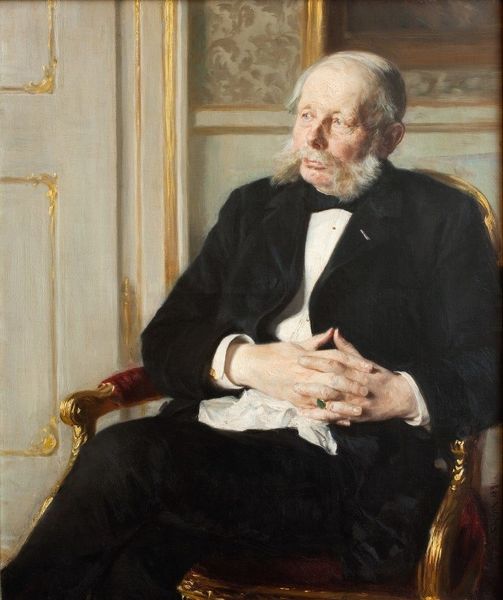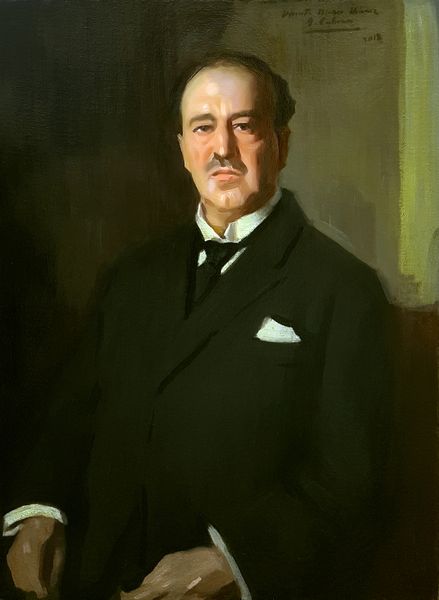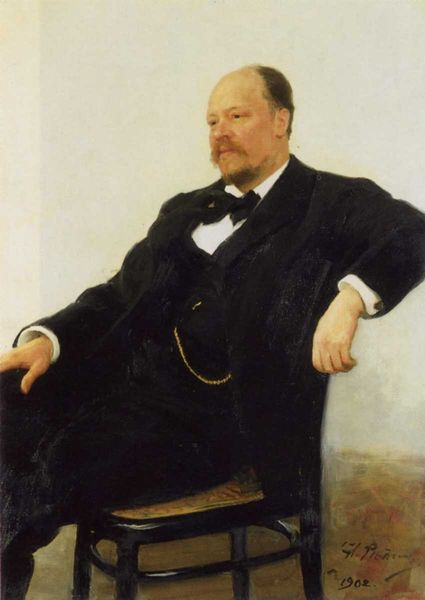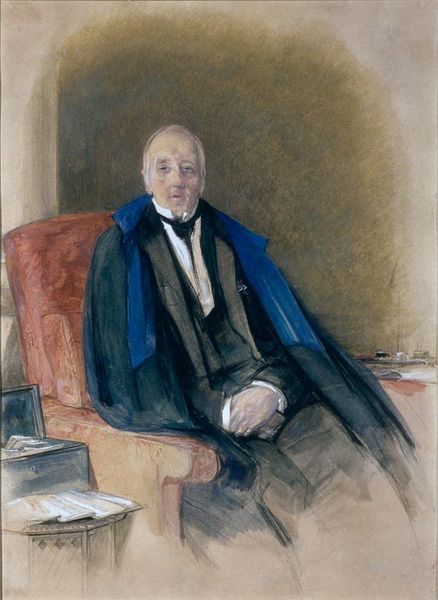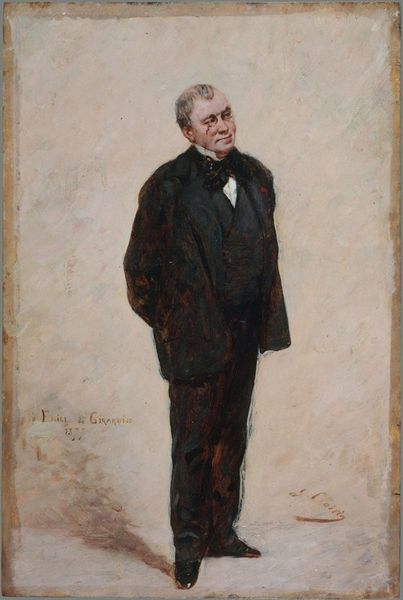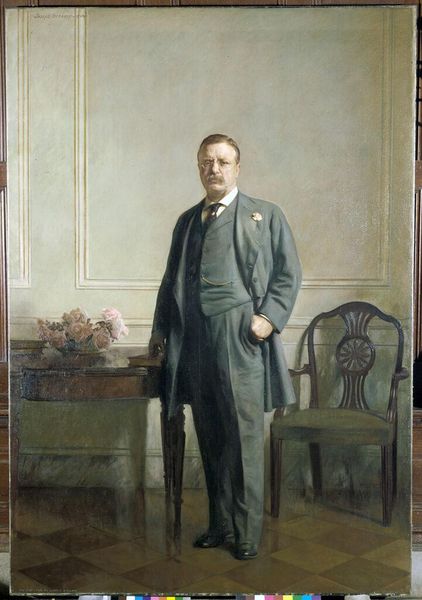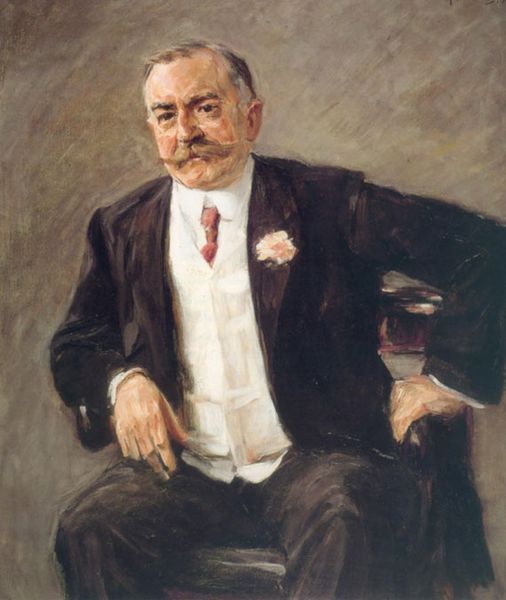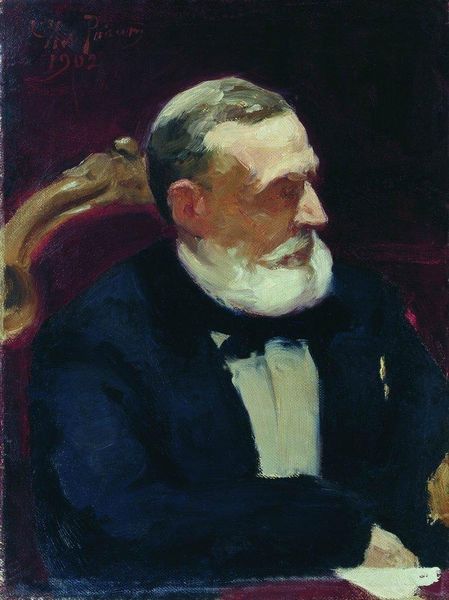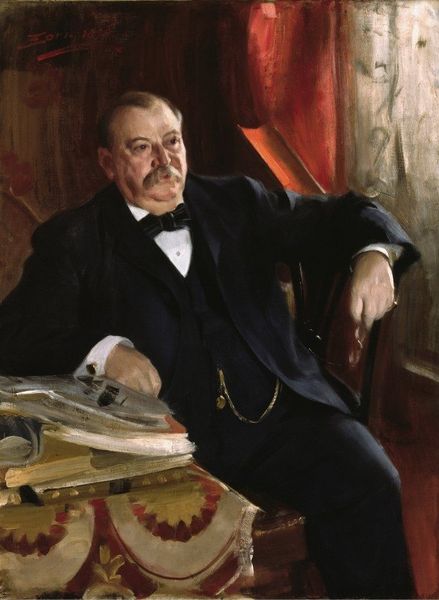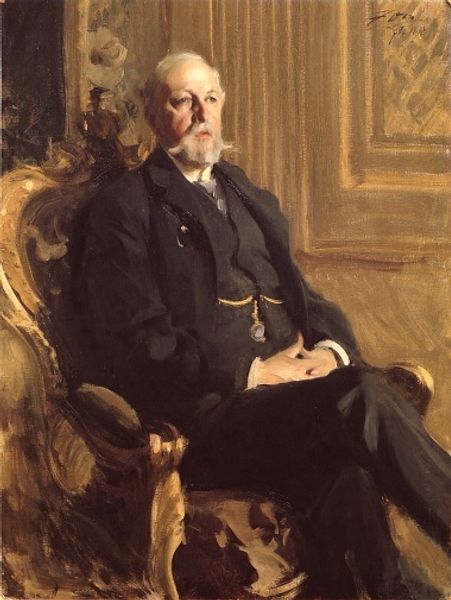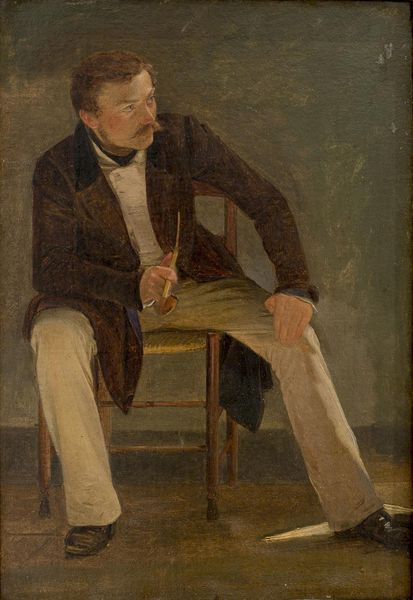
painting, oil-paint
#
portrait
#
figurative
#
art-nouveau
#
portrait
#
painting
#
impressionism
#
oil-paint
#
realism
Copyright: Public Domain: Artvee
Curator: Jacques-Émile Blanche painted this portrait of John Lemoine in 1887 using oil paint. What strikes you first about this work? Editor: A certain austerity, actually. There’s something deeply serious, almost melancholic, in the subject's pose and the subdued color palette. The figure commands the space with a sense of self-possession, but it is a very reserved, formal dominance. Curator: I think Blanche here uses the visual language of power, yet subtly complicates it. Look at how the rigid social expectations and constructs of masculinity during the late 19th century inform Lemoine's presentation, especially in how he mirrors many powerful portraits that came before him, all white male power. His posture, attire, even the somewhat sparse background—they speak volumes about societal norms and perhaps an imposed lack of emotional range for men of this stature during the time. Editor: Absolutely. Blanche, a key figure in the Parisian art scene, positioned Lemoine, who was the editor of the *Journal des Débats*, within a specific social and political context. The choice to depict him not actively working but rather in repose suggests a contemplation of power rather than its outright performance. And note the setting too; there are few accoutrements of power visible, nothing loud. This muted surrounding throws a particular light on the portrayed sitter. Curator: Considering your points, I now wonder about the gaze as a negotiation. Lemoine is both observing and being observed. Is there an implicit invitation here, not just to admire, but to interrogate the conditions that produce this kind of male figure? What were the socio-political expectations imposed upon such a public figure? How is he meeting them? Or maybe defying them in this depiction? Editor: Those questions are at the core of interpreting the artwork’s function in the history of portraiture. It is clear Blanche's work reflects and refracts broader social dynamics concerning class, political power, and the carefully maintained public image. Curator: It's quite incredible how Blanche could use oil on canvas to reflect and challenge conventions that continue to resonate even today. I find myself still seeing the residue of this imposed idea on men of what they can and cannot be, or what they should and should not present to the world, and paintings like this keep the question fresh in our mind. Editor: Indeed. "Portrait de John Lemoine" becomes a point of entry into understanding how art actively shapes, reinforces, and, perhaps most interestingly, questions the structures that define an era.
Comments
No comments
Be the first to comment and join the conversation on the ultimate creative platform.

